In December of 2011, we told you about the exciting new development that was nearly complete at 600 North Broad Street. Today, the complex represents the future promise of North Broad Street. Joe Volpe’s Vie, Marc Vetri’s Alla Spina and Stephen Starr’s Route 6 anchor a reviving area already pioneered by Osteria. This facelift for the property bound by Broad, Green, Mt. Vernon and 15th Streets is a big piece of the puzzle in the transformation of a long-neglected area. This is appropriate because, as history shows, this space has a documented habit of mirroring the broader (no pun intended) changes around it. Indeed, as shown by the image below, taken from Hexamer & Locher’s 1858 Philadelphia Atlas, the 600 block of North Broad was a lumberyard, as was every block between Spring Garden and North Streets.
The heavy concentration of lumberyards in this area speaks to North Philly’s role in our mid-19th century reputation as The Workshop of the World. Wealthy merchant Richard Wistar came to own the lumberyard and surrounding estates, and according to an unnecessarily obfuscating genealogy deliberated upon in the 1887 Central Reporter, bequeathed the encompassing six-and-a-half acres, referred to as Prospect Hill, to his two daughters and their in-laws upon his death. The illustration below, taken from Virtualology, shows Wistar, presumably some time prior to said death.
By the turn of the 20th century, Prospect Hill had been whittled down to a single parcel of land along Green Street between Broad and 15th. In just a few years, this parcel too would be gone. It was at this point that the plot in question began its life as a mixed-use complex. The southeast corner of 15th and Mt. Vernon became the site of the Trinity Methodist Church which, according to Moses King’s King’s Views of Philadelphia, was “occupied by one of the leading uptown congregations.” The photo below, also taken from King’s collection, shows the church in 1900, shortly after its opening.
The church would be short-lived in this location. In 1920, brothers Joseph and Lewis Biberman moved their growing fashion label, L’Aiglon, to the newly constructed Biberman Building on the site of the former church. The information above and the advertisement here below are taken from Vintage Fashion Guild.
According to Vintage Fashion Guild, Biberman Make employed 400 workers a day at the 15th and Mt. Vernon site at its height of operations. Meanwhile, ‘round front, the 600 block continued to reflect the shifts in the neighborhood itself. Auto service had replaced lumber as the area’s primary output. The photo taken from Philadelphia Department of Records shows Maxwell’s Service Station on Broad between Mt. Vernon and Green.
Over the course of the next several decades, the block would be home to all manner of automotive interests. According to the Works Progress Administration’s 1962 Land Use Map, the front side was then occupied by Broad Street Motors.
Identified alternately as the Mt. Vernon Building in the image here above, the Biberman Building would become a garage for the car dealership upon the clothing line’s folding (pun intended) in 1968. The next known occupant of 600 N. Broad Street was the Wilkie Auto Body Shop. And just as North Broad was starting to make its comeback, the Wilkie dealership closed down for good.
Just as this block has reflected the wax and wane of North Broad, its new occupants in Volpe, Vetri and Starr, along with the hundreds of new residents in the Biberman Building, make it a promising sign of transformation yet to come.
–David Tomar

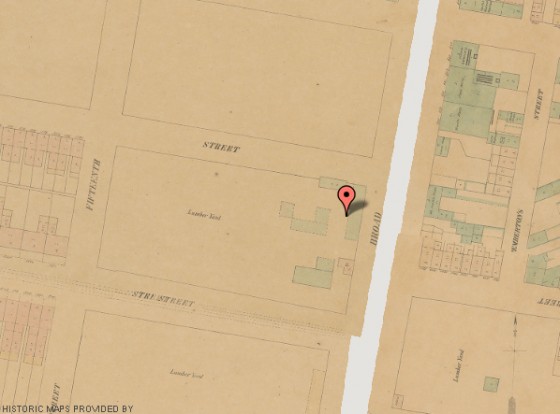
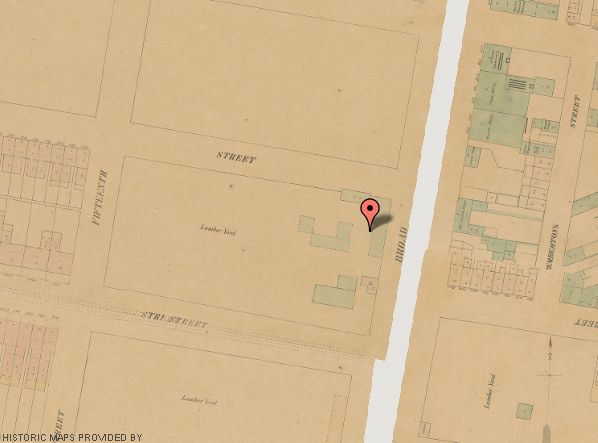
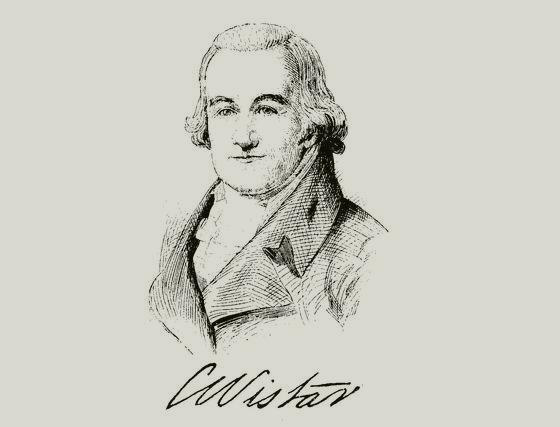
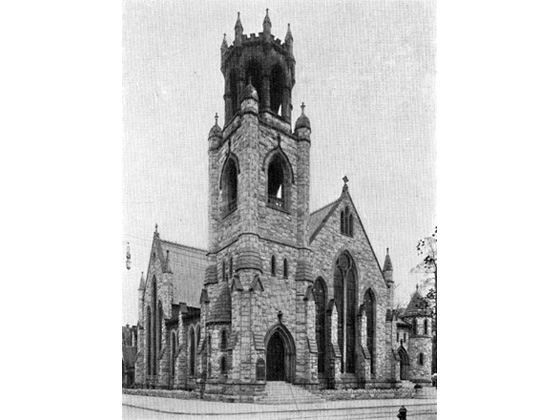
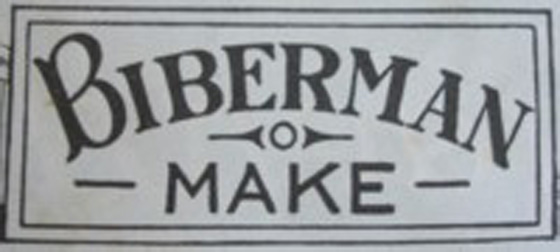
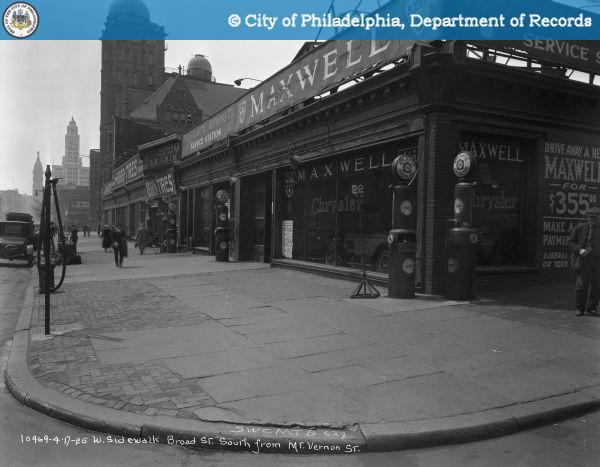
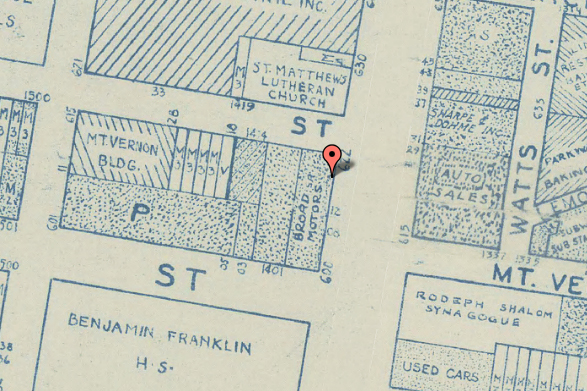
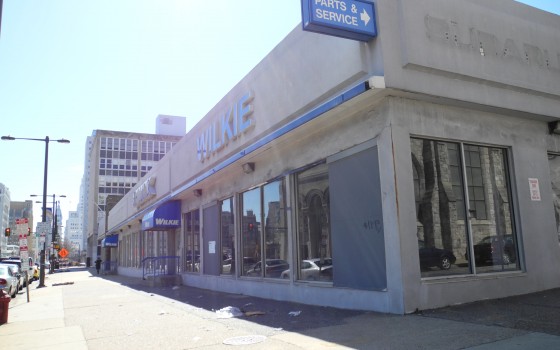
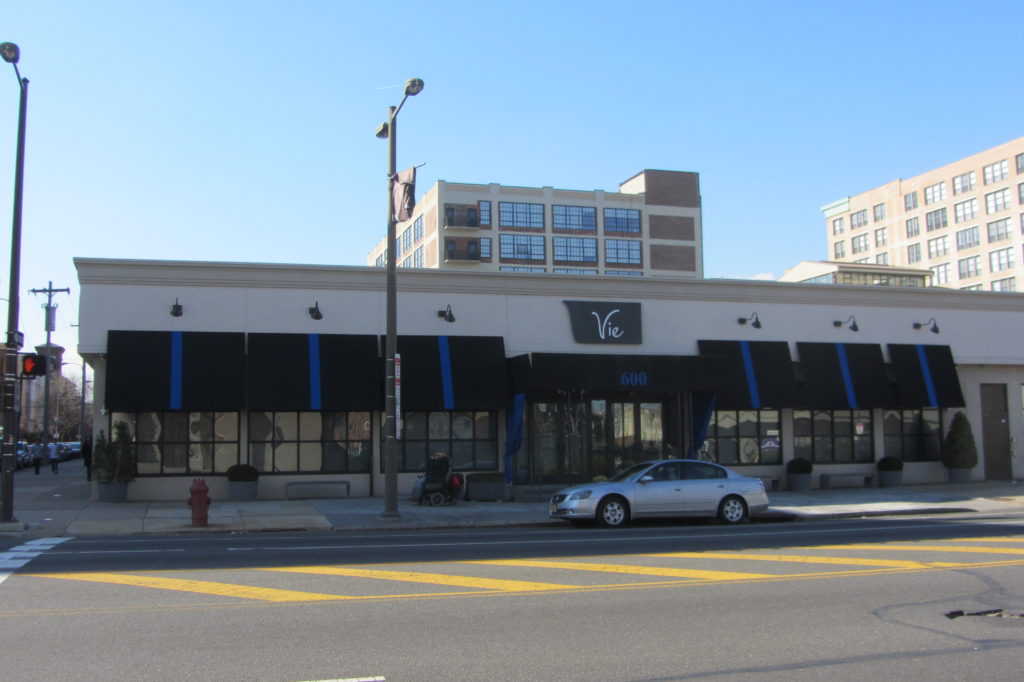
Leave a Reply